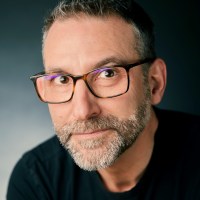On July 21, Apple released a new version of the Apple Music app for Android, bringing it up to date with the latest iOS features, specifically Apple’s support for both lossless audio and spatial audio via Dolby Atmos Music.
But being able to access these new features will depend on the capabilities of your specific Android device. While lossless audio appears to be universally supported on Android phones, the same cannot be said of spatial audio.
In order for spatial audio to work within the Apple Music app, your Android handset needs to support Dolby Atmos, and not all of them do. In fact, when I went to try out spatial audio on my Google Pixel 5, I discovered that even though I could see Apple Music’s curated
This was confirmed once I jumped into the app’s settings menu. An option to enable lossless audio showed up — along with the usual warnings about the large size of lossless tracks and how that might affect your data consumption on both Wi-Fi and cellular connections — but there were no spatial audio options.
On an iOS device or a Dolby Atmos-compatible Android phone, you should be able to choose whether spatial audio is managed automatically (when the app detects that you’re using Apple or Beats headphones or earbuds) or set to always-on or always-off.
The good news for Android owners is that Dolby Atmos support is very common, especially among Samsung handsets. When you add LG, Sony, Motorola, and Huawei, it means that a majority of
If your phone does support Dolby Atmos, you’ll be able to listen using any set of wired or
In general, lossless audio at CD quality (16-bit, 44.1kHz) should work on any phone with a headphone jack. Going higher than that (24-bit/48kHz or 24-bit/96kHz) is where you may need that external DAC.
For more info on how to get the most out of these new Apple Music features, see our helpful “What you need to listen to lossless audio and Dolby Atmos on Apple Music” explainer.
Editors' Recommendations
- Spatial audio via headphones: how science crams 9 speakers and a subwoofer inside your head
- What is spatial audio? The 3D sound experience fully explained
- How much is Apple Music, and how can you get it for free?
- Apple’s Dolby Atmos Music bounty could be a disaster for the format
- What is Apple Music? Music, pricing, and features explained




